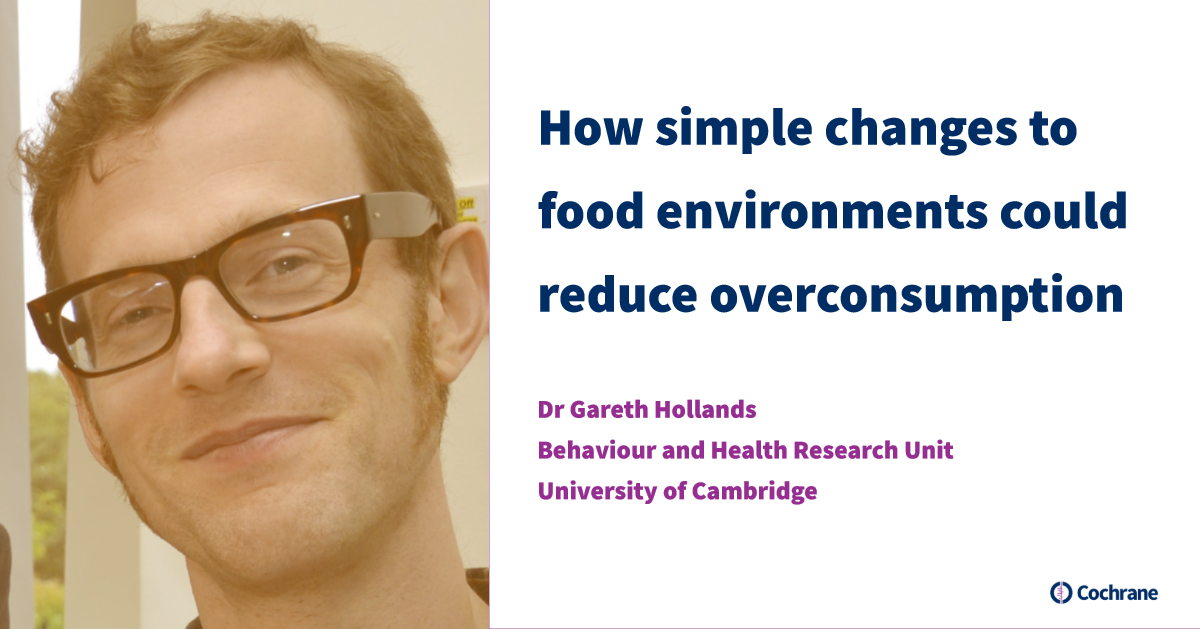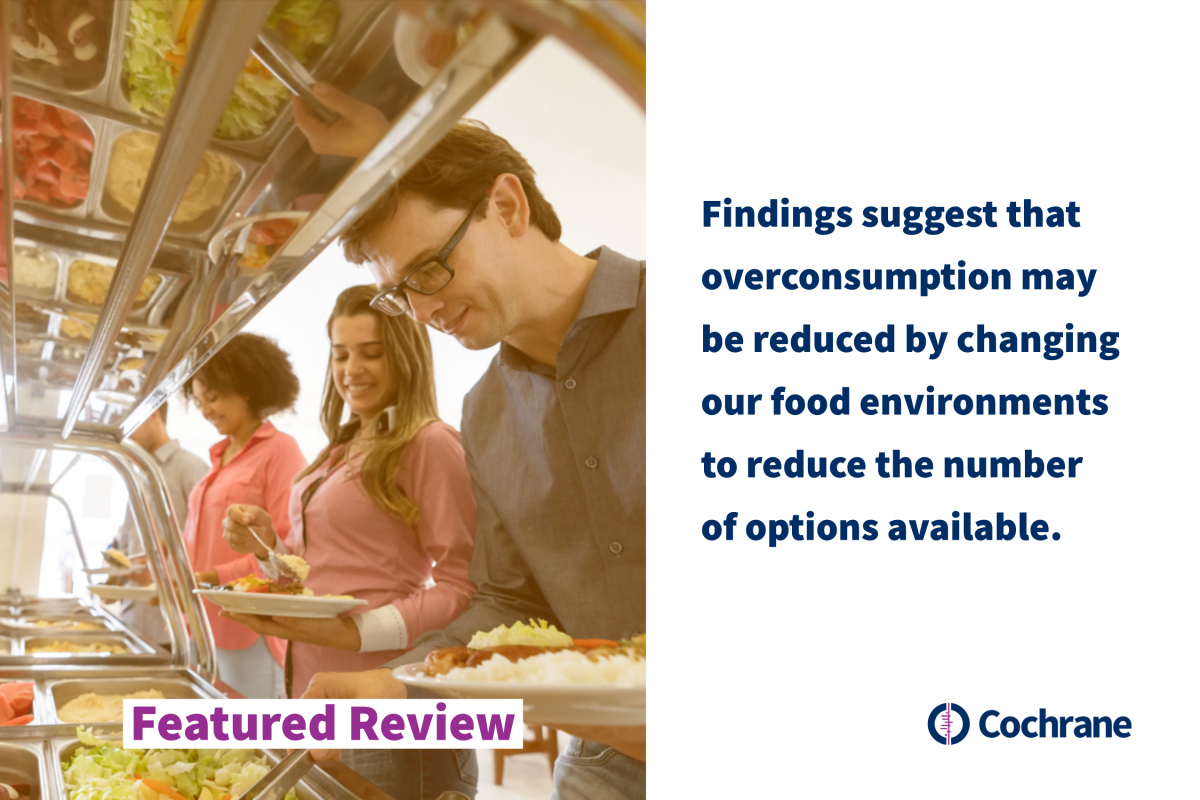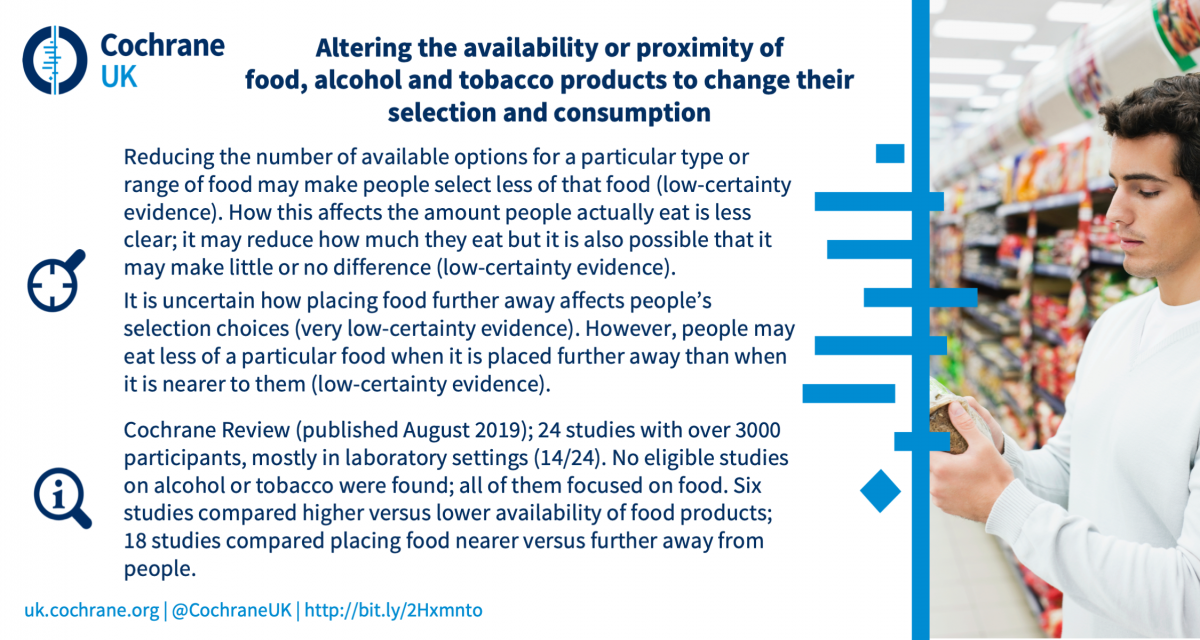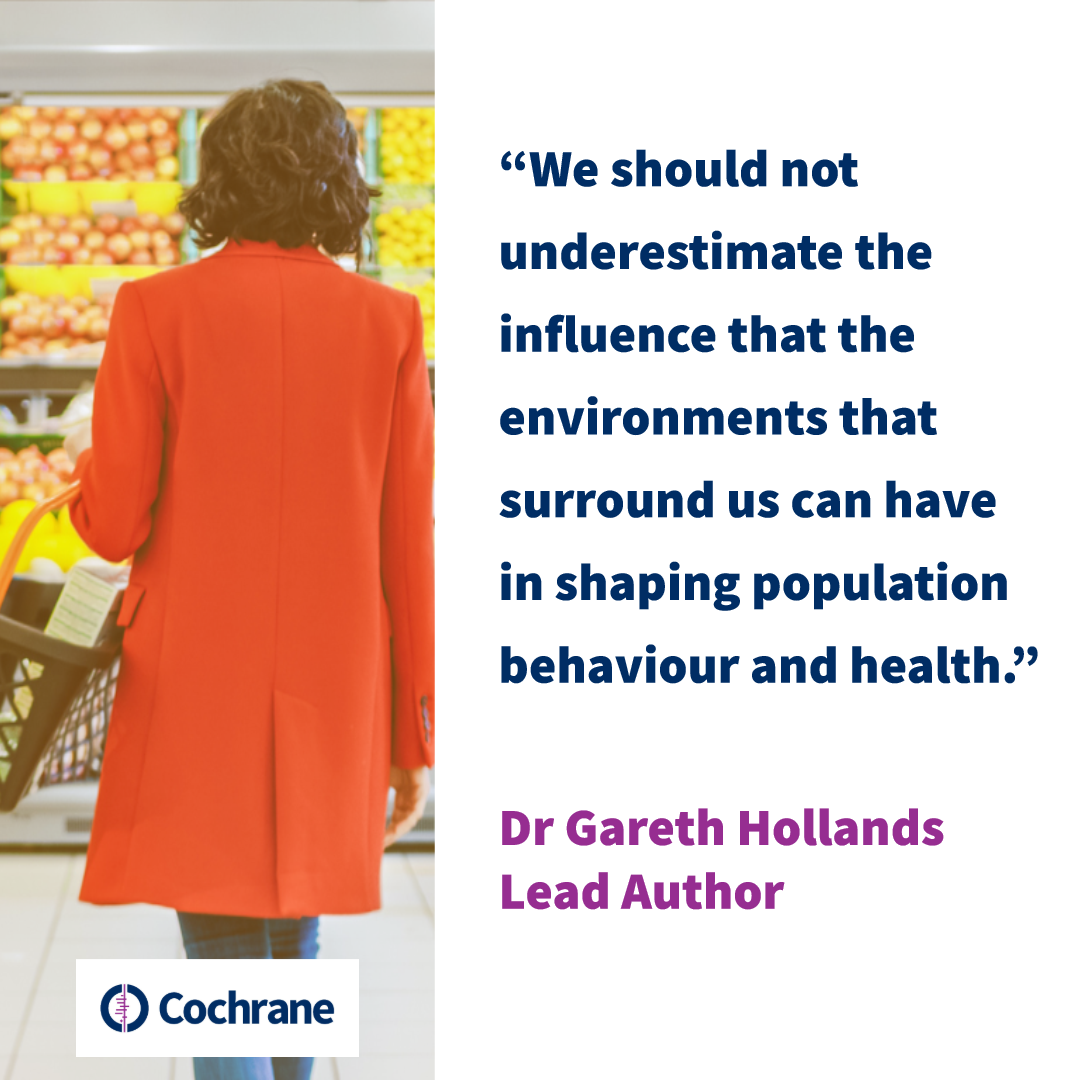
In this article, lead author Dr Gareth Hollands from the Behaviour and Health Research Unit, University of Cambridge, summarizes some of the key messages from 'Altering the availability or proximity of food, alcohol, and tobacco products to change their selection and consumption' published by Cochrane Public Health.

Would you be less likely to buy a chocolate bar to eat if there were fewer different chocolate bars on display in the shop and more types of fruit instead? And would you eat fewer snacks from a bowl if you had to walk to the other side of the room to get your hands on them?
We found 24 studies in total: six looked at altering availability and 18 at proximity. These studies provided low-certainty evidence that reducing the number of options of a range of food could reduce the amount selected by 36% (three studies in 154 people) and the amount consumed by 17% (two studies in 150 people). We also found low-certainty evidence from 12 studies in 1098 people that placing food products further away from people could reduce how much they consume by 19%. These findings suggest that overconsumption may be reduced by changing our food environments to reduce the number of options available – such as reducing the range of unhealthy foods on restaurant menus or in vending machines – and move unhealthier products to less convenient locations, such as away from supermarket checkouts.

But some important uncertainties about these results remain, including what they could mean for altering our food environments to reduce overconsumption. For example, relatively few studies have been conducted, and of these, many are of poor quality. Especially few studies tested the effect of these changes in “real world” settings and over the long-term. Most were conducted in scientific laboratories over short time periods. We therefore lack confidence that similar effects would be seen in the environments that matter - supermarkets, shops, cafeterias and restaurants where people buy and eat food. This lack of real-world evidence is consistent with other Cochrane Reviews that look at changing aspects of food environments, such as portion size and nutritional labelling.

This reflects the difficulty public health researchers have in gaining access to real world environments. Most supermarkets and cafeterias are commercial operations that benefit from their products being purchased and consumed. Consequently, they have little incentive to partner with researchers who want to find out how to reduce or change that consumption. But things are slowly changing, as commercial partners understand that the health of their staff and customers is a societal good, or at least is vital to a sustainable business. Important evidence is beginning to emerge from research programmes worldwide that involve commercial partners and research teams focused on changing food environments to benefit population and planetary health, including in the Netherlands, Australia and the UK (with further examples here.)
A stronger evidence base can inform policy actions to make changes to available food options and the position of foods in retail and other settings, in order to reduce overconsumption. Such actions are already beginning to be seen. These include mandating the nutritional composition of certain ranges of foods available within public-sector establishments , and the possibility of legislating to ensure that unhealthier foods are placed in less accessible positions in shops, away from checkouts and aisle ends. While such changes can only ever be part of a range of measures tackling overconsumption, we should not underestimate the influence that the environments that surround us can have in shaping population behaviour and health.

